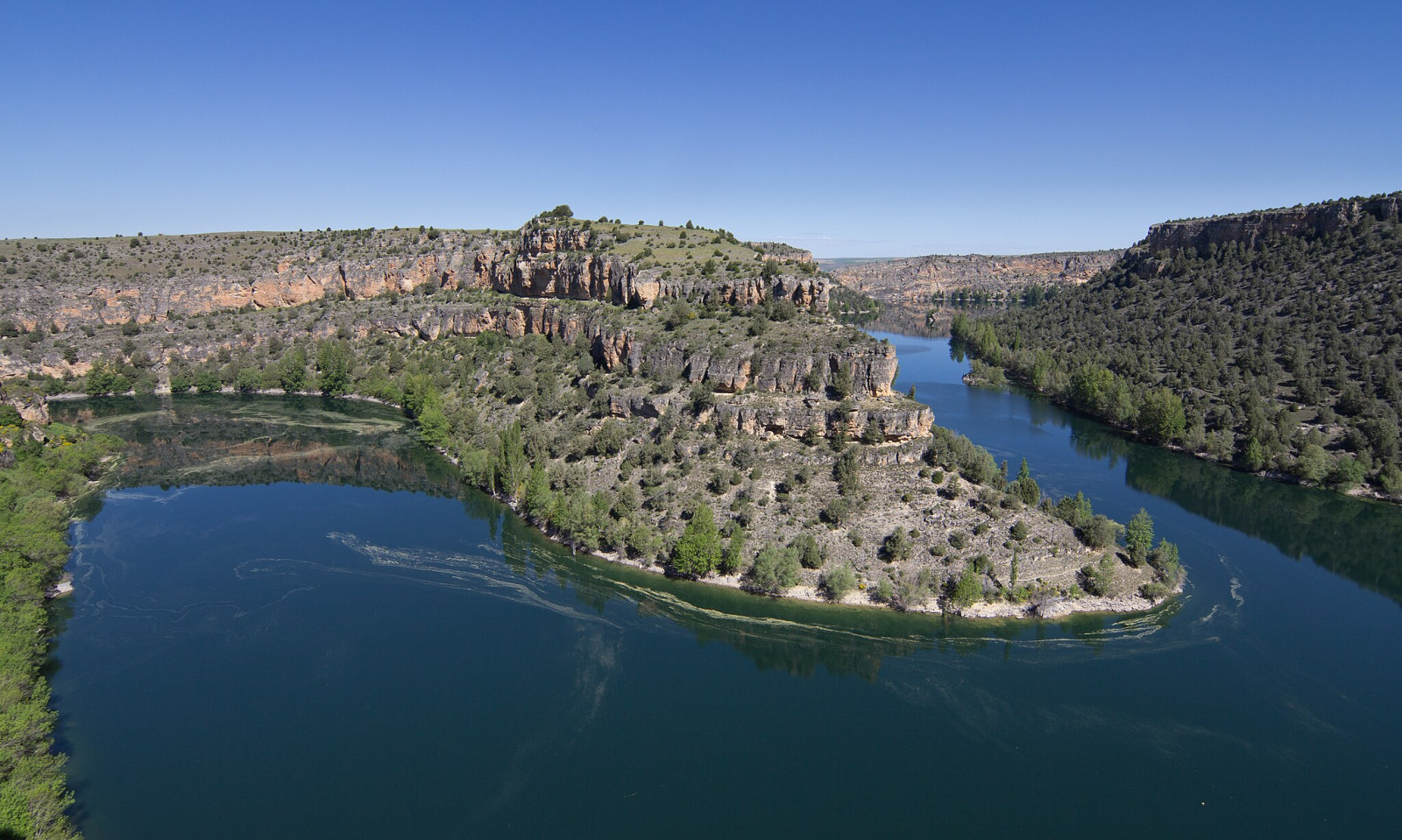Beschreibung
Parque natural de las Hoces del Río Duratón contains a series of 100 metres high gorges that were formed by the Duratón River. The area hosts a large colony of Gänsegeier. From the viewpoint of the hermitage of San Frutos you can see them flying over the limestone rock escarpments or in their nests.
_________________________
Espagnol: Hoces del río Duraton. Zona especial protección de aves ZEPA. En el tramo entre San Miguel de Bermuy y Fuentidiña Grandes escarpes de roca caliza. Gran colonia de de buitre leonado. Desde el mirador de la ermita de san frutos se pueden ver sobrevolando las hoces o en los nidos.
Details
Zugang
Hoces del río Duraton are located between San Miguel de Bermuy and Fuentidiña. From the village of Villaseca drive 4 km west to the parking of 'Mirador Ermita de San Frutos' (San Frutos Hermitage Viewpoint). Click on the P in the map for directions. From the parking it is a 1 km walk to the hermitage.
_________________________
Espagnol: Desde Villaseca. Mirador Ermita de San Frutos. Haga clic en la P en el mapa para obtener indicaciones para llegar al estacionamiento. Desde el parking hay un paseo de 1 km hasta la ermita.
Terrain und Habitat
Schlucht/CliffBedingungen
Flach , FelsigRundweg
NeinIst ein Spektiv nützlich?
Möglicherweise hilfreichGute Beobachtungszeit
GanzjährigBeste Beobachtungszeit
Herbst , FrühjahrRoute
unbefestigte StraßeSchwierigkeitsgrad der Tour
EinfachErreichbarkeit
zu Fuß , Fahrrad , AutoBeobachtungshütten oder -türme
NeinZusätzliche Informationen
Photo Hoces del Río Duratón by Carlos Delgado, CC BY-SA 4.0, via Wikimedia Commons




